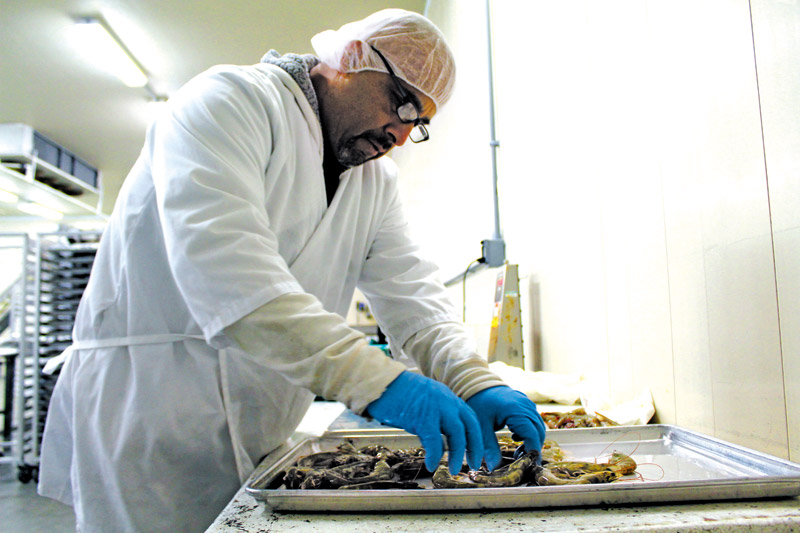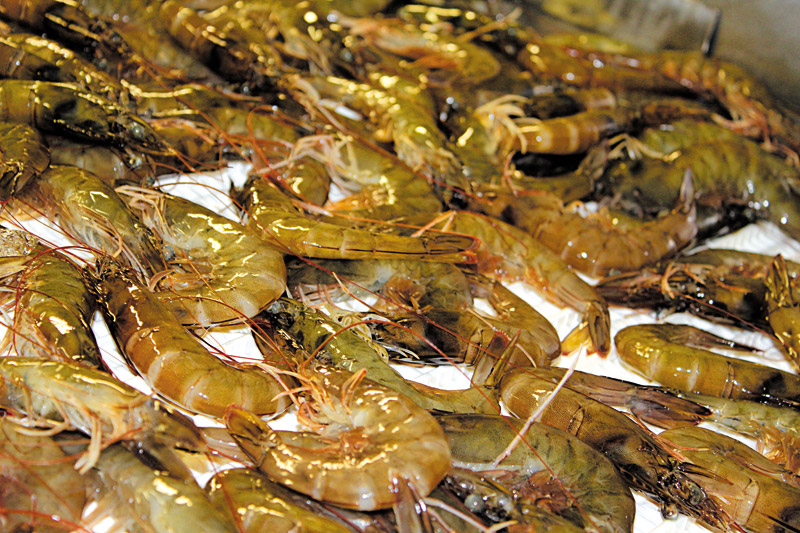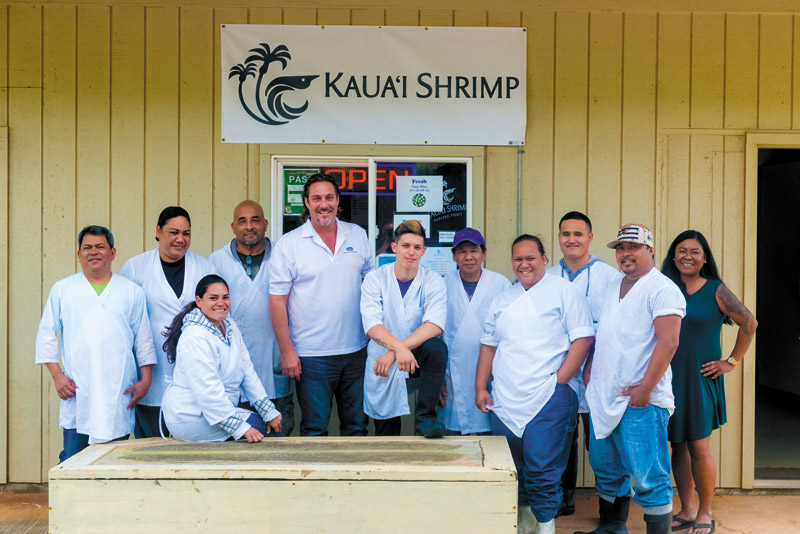Crates Of Crustaceans
Around the globe, the demand remains high for the tons of shellfish Kaua‘i Shrimp raises at its facility in Kekaha.
Thousands of recently harvested shrimp make their way down a conveyer belt at Kaua‘i Shrimp’s processing facility. The journey eventually lands the crustaceans into the hands of some of the busiest people in Hanapēpē, who sort shrimp bound for destinations around the globe.
These robust sea creatures are raised at Kaua‘i Shrimp’s facility in Kekaha. In fact, 5 tons of shrimp reside within 44 1-acre ponds at the West-side farm.
“These are our babies,” says processing manager Andy Althouse.
There’s been a sharp up-tick in local shellfish sales of late, which means the staff at Kaua‘i Shrimp is hard at work to keep up with the demand.
The business, which is conducted entirely on island, generates a product that is as natural as if you plucked the shrimp right out of the ocean. These “fruits of the sea” aren’t adulterated with sulfites (what makes people allergic to shrimp), chemicals or processing aids.
Harvest occurs at 5:30 a.m. on weekdays, after which point the shrimp are put through a “chill kill” procedure before making their way to the processing plant a few hours later. Here, they are graded by size and cuticle hardness, and destined for distribution. The plant can process more than 5,000 shrimp before noon, and by 2 p.m. have them frozen and bound for their eventual destination to someone’s dinner plate. Each week, roughly 16,000-17,000 pounds are delivered throughout the state and Mainland, as well as countries like Japan. Last month, however, the enterprise reached a new record by distributing more than 20,000 pounds in one week.
“Things are really progressing well,” says Althouse. “Everything we make is already sold. As long as we get shrimp into people’s hands, once they try our product, all they want is more.”
According to Althouse, the magic starts at the nearby farming facility, which reopened its doors about a decade ago. Here, the shrimp are raised in salt water sourced from a well that has percolated through the volcanic substrata of Kaua‘i for eons. Kaua‘i Shrimp also cultivates its own algae to make a hospitable environment to sustain life for the shrimp. This domain, coupled with special anchovy-based food products, lends each Kaua‘i Shrimp crustacean its unique, snappy texture.
“Almost like lobster or a rock shrimp,” says Althouse.
The former executive chef prides himself for having used whole animals “tail to snout” when he professionally prepared food. That’s one reason why he enjoys working for Kaua‘i Shrimp: Shrimp are sold with heads, shells and tails still intact. This business strategy contributes to sustainable farming and forgoing waste, allowing chefs to use as much of the product as possible.
Leaving heads on the shrimp also gives buyers a way to decipher freshness and find out whether the shrimp have been mishandled or if the “cold chain” — being frozen and then re-frozen — has been disrupted. Because if any of these things happen, the head turns red. And just like you wouldn’t want to purchase a fish at the market with cloudy eyes and slimy gills, you wouldn’t want to buy shrimp in this condition.
Providing this kind of superior product is another reason why Althouse continues to remain at the processing facility’s helm — that, and the business’ focus on aspects like selective breeding and sustainability.
“It was a perfect match for me,” he says.
And now he gets to work on new projects that include raising and distributing clams and oysters, as well as implementing new traceability and inventory systems. He’s also instrumental in the business, becoming one of the top brood stock suppliers on the planet, which means sending “mamas” and “papas” to countries like India, China and Vietnam.
“Aquaculture is going to become more and more important in feeding people on this planet,” says Althouse.
A movement, he adds, that wouldn’t be possible without a team effort.
Visit kauaishrimp.com for more information.







